The post Discover the Best of Aussie Fashion: 15 Must-Know Clothing Brands appeared first on TheAussieway.
]]> The Australian fashion industry has been making waves on the global stage, recognized for its innovation, high-quality craftsmanship, and commitment to sustainability. From chic urban streetwear to luxurious high-end pieces, Australian clothing brands cater to diverse styles and preferences. Whether you’re a fashion enthusiast or simply looking for the next great addition to your wardrobe, exploring Aussie fashion is a must.
The Australian fashion industry has been making waves on the global stage, recognized for its innovation, high-quality craftsmanship, and commitment to sustainability. From chic urban streetwear to luxurious high-end pieces, Australian clothing brands cater to diverse styles and preferences. Whether you’re a fashion enthusiast or simply looking for the next great addition to your wardrobe, exploring Aussie fashion is a must.
Australia is home to a variety of labels that blend creativity, quality, and sustainability, making them some of the best Australian fashion brands to watch. From bohemian-inspired resort wear to tailored modern silhouettes, these designers offer something for every wardrobe. Below, we take a closer look at 15 standout brands, showcasing their unique aesthetics, key pieces, and what makes them iconic in the world of fashion.
15 Must-Know Australian Clothing Brands
1. Zimmermann
- Founded: 1991
- Location: Sydney, NSW
- Style/Focus: Luxury fashion, bohemian-chic, feminine silhouettes
- Key Products: Dresses, swimwear, resort wear
- Unique Selling Point: Internationally acclaimed for its elegant designs and exquisite fabrics.

Zimmermann is a trailblazer in luxury fashion Australia, known for its ethereal designs, intricate lacework, and striking prints. With a focus on femininity and effortless sophistication, the brand has gained a loyal following worldwide, frequently seen on celebrities and influencers. Whether it’s delicate resort wear or structured occasion dresses, Zimmermann continues to set the standard for contemporary elegance in Australian design.
2. Aje
- Founded: 2008
- Location: Sydney, NSW
- Style/Focus: Contemporary, effortless elegance
- Key Products: Statement dresses, structured blazers, artistic prints
- Unique Selling Point: Combines raw beauty with a sense of sophistication, featuring hand-finished details.

Aje seamlessly fuses coastal Australian influences with urban sophistication, creating clothing that is both bold and wearable. Known for their voluminous silhouettes, intricate detailing, and contemporary cuts, Aje pieces make a statement while retaining versatility. As one of the most sought-after local fashion brands Australia has produced, Aje’s designs exude confidence and timeless beauty.
3. Bassike
- Founded: 2006
- Location: Sydney, NSW
- Style/Focus: Minimalist, organic luxury
- Key Products: Organic cotton basics, relaxed tailoring
- Unique Selling Point: Prioritizes sustainability, using eco-friendly materials and ethical manufacturing.

For those who appreciate understated elegance, Bassike is a go-to for elevated essentials. Their commitment to eco-friendly clothing Australia is evident in their use of organic fabrics and sustainable production methods. Specializing in relaxed tailoring and clean lines, Bassike’s pieces are perfect for those who love modern minimalism with a conscience.
4. Camilla and Marc
- Founded: 2003
- Location: Sydney, NSW
- Style/Focus: Modern luxury, tailored elegance
- Key Products: Power suits, elevated basics, outerwear
- Unique Selling Point: Sophisticated silhouettes with a timeless appeal.

A household name in luxury fashion Australia, Camilla and Marc have perfected the balance between power dressing and relaxed refinement. From structured blazers to sleek dresses, their pieces exude confidence and sophistication, making them a favorite for professionals and fashion-forward individuals alike.
5. Ksubi
- Founded: 1999
- Location: Sydney, NSW
- Style/Focus: Edgy streetwear, distressed denim
- Key Products: Jeans, graphic tees, jackets
- Unique Selling Point: Bold, rebellious designs favored by celebrities and trendsetters worldwide.

For those who embrace streetwear culture, Ksubi is an iconic label that has redefined Aussie fashion with its rebellious aesthetic. Known for distressed denim, graffiti-style prints, and bold silhouettes, Ksubi is synonymous with effortless cool.
6. The Iconic (In-House Brands)
- Founded: 2011
- Location: Sydney, NSW
- Style/Focus: Trend-driven, accessible fashion
- Key Products: Affordable everyday wear, footwear, accessories
- Unique Selling Point: A one-stop-shop for diverse fashion needs with a focus on convenience.

As one of Australia’s largest online fashion retailers, The Iconic curates a selection of its own in-house labels that cater to all tastes. Their affordable yet stylish pieces make fashion accessible, ensuring everyone can participate in Aussie fashion trends.
7. Nobody Denim
- Founded: 1999
- Location: Melbourne, VIC
- Style/Focus: Sustainable denim
- Key Products: Jeans, denim jackets, shorts
- Unique Selling Point: Ethically made in Australia with a commitment to reducing environmental impact.

Denim lovers will appreciate the quality and sustainability of Nobody Denim. With a strong emphasis on ethical manufacturing, the brand delivers premium denim that feels as good as it looks.
8. Spell & The Gypsy Collective
- Founded: 2009
- Location: Byron Bay, NSW
- Style/Focus: Bohemian, sustainable fashion
- Key Products: Flowing dresses, printed skirts, vintage-inspired pieces
- Unique Selling Point: Eco-conscious production and dreamy, free-spirited aesthetics.

Inspired by vintage styles and nature, Spell & The Gypsy Collective is a favorite among free-spirited fashion lovers. Their pieces are designed with sustainability in mind, making them a leader in eco-friendly clothing Australia.
9. P.E Nation
- Founded: 2016
- Location: Sydney, NSW
- Style/Focus: Activewear, athleisure
- Key Products: Leggings, sports bras, jackets
- Unique Selling Point: Blends fashion with function, offering performance wear with a street-style edge.

P.E Nation redefines activewear by merging high-performance fabrics with urban aesthetics. Their bold designs and functional pieces have become essentials for both workouts and streetwear ensembles.
10. Gorman
- Founded: 1999
- Location: Melbourne, VIC
- Style/Focus: Quirky, sustainable fashion
- Key Products: Dresses, knitwear, accessories
- Unique Selling Point: Known for bold prints, ethical production, and artist collaborations.

A vibrant force in Aussie fashion, Gorman is beloved for its bold colours, quirky prints, and sustainable manufacturing. Their collaboration with artists ensures fresh, one-of-a-kind designs that make a statement.
11. SIR The Label
- Founded: 2014
- Location: Sydney, NSW
- Style/Focus: Modern minimalism, elevated basics
- Key Products: Linen dresses, swimwear, separates
- Unique Selling Point: Timeless pieces with a focus on sustainability and effortless wearability.

SIR The Label has cemented itself as a staple in the Australian fashion industry, thanks to its effortlessly elegant aesthetic. This Sydney-based brand is synonymous with modern femininity, offering a selection of linen dresses, soft tailoring, and understated swimwear that exudes sophistication. The brand is also deeply committed to sustainable production, ensuring that its collections not only look good but also align with ethical fashion principles. With its neutral color palette and minimalist silhouettes, SIR The Label embodies the timeless charm that defines fashion brands from Australia.
12. Assembly Label
- Founded: 2011
- Location: Sydney, NSW
- Style/Focus: Casual essentials, laid-back luxury
- Key Products: T-shirts, linen shirts, everyday basics
- Unique Selling Point: Sustainable and affordable high-quality essentials.

Known for its focus on high-quality essentials, Assembly Label is one of the most popular local fashion brands Australia has to offer. The brand’s commitment to sustainability and affordability makes it a go-to choice for those who appreciate effortless dressing. From soft linen shirts to classic cotton basics, Assembly Label’s designs embrace a minimalist approach to fashion. With a strong emphasis on natural fabrics and eco-conscious production, the brand has gained a loyal following among those who appreciate ethically made clothing. Its designs reflect the relaxed, coastal lifestyle that influences many Australian fashion trends.
13. St. Agni
- Founded: 2014
- Location: Byron Bay, NSW
- Style/Focus: Minimalist, handcrafted fashion
- Key Products: Footwear, handbags, tailored wear
- Unique Selling Point: Commitment to ethical craftsmanship and timeless simplicity.

Hailing from the laid-back coastal town of Byron Bay, St. Agni is an independent label known for its refined yet relaxed aesthetic. Every piece is crafted with an appreciation for simplicity and function, making it a favorite among those who value understated luxury. St. Agni’s collections include sleek leather footwear, tailored separates, and artisanally crafted handbags. The brand’s dedication to ethical production and use of premium materials aligns perfectly with the growing demand for eco-friendly clothing Australia. With its effortlessly cool designs, St. Agni continues to set the bar for modern, sustainable fashion in Australia.
14. Bec + Bridge
- Founded: 2003
- Location: Sydney, NSW
- Style/Focus: Contemporary, feminine fashion
- Key Products: Slip dresses, tailored separates
- Unique Selling Point: Known for figure-flattering silhouettes and modern elegance.

Bec + Bridge is a powerhouse in luxury fashion Australia, recognized for its sleek and feminine designs. The brand has built a reputation for crafting flattering silhouettes that celebrate the female form, making it a favorite among celebrities and influencers. From effortlessly chic slip dresses to structured blazers, every piece is designed to enhance confidence and style. Whether it’s a red carpet event or a casual outing, Bec + Bridge seamlessly blends contemporary fashion with timeless elegance. The brand’s influence extends beyond Australia, with its collections frequently spotted on the global fashion stage.
15. R.M. Williams
- Founded: 1932
- Location: Adelaide, SA
- Style/Focus: Heritage workwear, leather craftsmanship
- Key Products: Boots, belts, outback-inspired apparel
- Unique Selling Point: Iconic Australian brand renowned for durability and quality.

One of the oldest and most iconic fashion brands from Australia, R.M. Williams is synonymous with quality craftsmanship and rugged elegance. Established in the 1930s, the brand has maintained its commitment to durable and stylish workwear, becoming a symbol of Australia’s rich heritage. Best known for its handcrafted leather boots, R.M. Williams has evolved beyond its outback roots, gaining popularity in urban settings as well. Its premium belts, jackets, and accessories showcase the brand’s dedication to superior craftsmanship. Today, R.M. Williams stands as a testament to the enduring appeal of Australian fashion.
Diversity in Australian Fashion
Australia’s fashion industry boasts a diverse range of brands catering to different aesthetics and lifestyles. From luxury fashion Australia leaders like Zimmermann to edgy streetwear pioneers like Ksubi, and sustainability-driven labels like Nobody Denim, there is something for every fashion enthusiast.
The Australian fashion industry continues to evolve, blending contemporary designs with traditional craftsmanship. Many brands are embracing sustainability, ensuring that style does not come at the expense of the environment. Additionally, Australian fashion trends often reflect the country’s vibrant culture, from relaxed coastal influences to bold urban streetwear.
As more local fashion brands Australia gain international recognition, the country’s fashion scene is proving to be a force to be reckoned with. Whether you’re looking for minimalist essentials, eco-friendly clothing, or high-end statement pieces, fashion brands from Australia offer a diverse and dynamic selection that caters to every style preference.
Sustainability and Ethical Fashion
Sustainability is no longer just a trend in fashion—it has become a defining characteristic of many leading Australian brands. With growing awareness of environmental and social issues, consumers are increasingly prioritizing ethical production and eco-conscious materials. Recognizing this shift, numerous brands in fashion shopping Australia are taking proactive steps to minimize their environmental impact.
Labels like Bassike, Spell & The Gypsy Collective, and Assembly Label are at the forefront of this movement, advocating for ethical manufacturing, organic fabrics, and responsible sourcing. Bassike, for example, uses GOTS-certified organic cotton in its signature basics and maintains a transparent production process within Australia. Spell & The Gypsy Collective focuses on sustainable fabrics, including LENZING ECOVERO
ECOVERO viscose, while Assembly Label ensures fair wages and ethical working conditions across its supply chain.
viscose, while Assembly Label ensures fair wages and ethical working conditions across its supply chain.
Beyond individual brands, the entire Australian fashion trends landscape is shifting towards greener solutions. Many emerging designers are prioritizing upcycling, circular fashion models, and zero-waste manufacturing techniques. These initiatives not only reduce environmental impact but also encourage consumers to make mindful purchasing decisions. With sustainability becoming an integral part of the industry, Australian fashion is setting a benchmark for responsible style on a global scale.
International Appeal
Australian fashion is not just thriving locally—it has made a significant mark on the international stage. The country’s designers have a unique ability to merge effortless, laid-back aesthetics with bold, fashion-forward innovation, making them highly sought after worldwide.
Luxury labels like Zimmermann, Camilla and Marc, and Ksubi have established a strong global presence, frequently worn by celebrities, influencers, and fashion insiders. Zimmermann’s dreamy, feminine designs are a favorite at New York Fashion Week, while Ksubi’s rebellious streetwear has been embraced by A-list musicians and artists. Meanwhile, Camilla and Marc’s sophisticated tailoring and minimalist pieces have become wardrobe staples for high-end shoppers globally.
Newer brands are also expanding their reach. P.E Nation, known for its fashionable yet functional activewear, has gained traction in markets like the U.S. and Europe, proving that performance wear can be both stylish and versatile. Similarly, St. Agni’s minimalist and handcrafted designs have found a loyal audience in international fashion capitals. These brands showcase the diversity of Australian design, blending craftsmanship, innovation, and contemporary style to stand out in the global fashion scene.
The increasing recognition of Australian clothing for women/men internationally is a testament to the industry’s quality and creativity. With e-commerce and global shipping making it easier to access Australian fashion worldwide, consumers everywhere are embracing the unique aesthetics and high standards of craftsmanship that Aussie designers offer.
Conclusion
Australian fashion is a dynamic and ever-evolving industry, offering a mix of luxury, sustainability, and trendsetting designs. Whether you’re looking for high-end pieces, casual essentials, or eco-conscious fashion, these 15 brands showcase the best of Aussie creativity. By supporting local brands, fashion lovers can contribute to the growth of the Australian fashion industry while embracing its unique style and innovation.
The post Discover the Best of Aussie Fashion: 15 Must-Know Clothing Brands appeared first on TheAussieway.
]]>The post Australia’s Adventure Tourism Market Set for Explosive Growth by 2031 appeared first on TheAussieway.
]]>With travellers seeking unique and off-the-beaten-path adventures, Australia adventure tourism has evolved beyond traditional sightseeing. From deep-sea diving in the Great Barrier Reef to skydiving over the Whitsundays, the industry offers a wide range of experiences catering to all levels of thrill-seekers. This article explores key industry trends, market segments, economic impact, and the future outlook of adventure tourism in Australia.
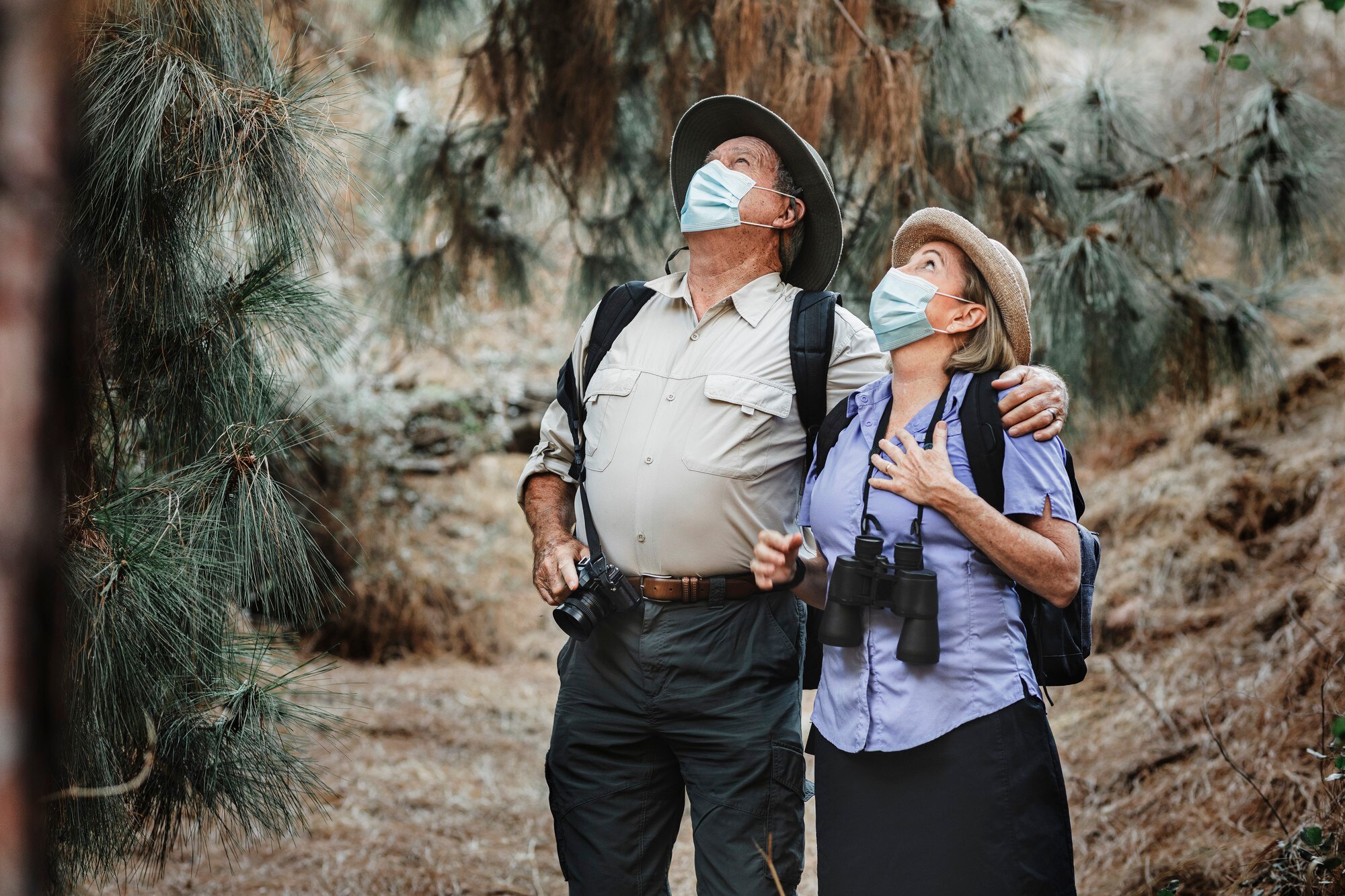
Rising Preference for Adventure and Outdoor Activities
Globally, adventure tourism has seen an unprecedented boom as travellers move away from conventional vacations in favor of action-packed and immersive outdoor experiences. Activities such as hiking, rock climbing, white-water rafting, and wildlife safaris have become increasingly popular among both domestic and international visitors.
Australia, with its stunning and diverse natural landscapes, is uniquely positioned to cater to this growing demand. The country’s vast coastline, dense rainforests, rugged outback, and mountain ranges provide countless opportunities for adventure travelers. Some of the most sought-after outdoor experiences Australia has to offer include:
- The Great Barrier Reef – One of the world’s top diving destinations, offering unforgettable scuba diving and snorkeling experiences among vibrant coral reefs.
- The Blue Mountains – A paradise for rock climbers, abseilers, and bushwalkers seeking breathtaking views and challenging terrain.
- Uluru and the Outback – A destination that combines adventure with Indigenous cultural immersion, where travelers can trek across stunning desert landscapes.
- Tasmanian Wilderness – A haven for hikers and kayakers, offering untouched natural beauty and incredible wildlife encounters.
As adventure travel trends shift towards authentic, experience-driven journeys, Australia continues to attract adventure enthusiasts looking for a perfect blend of excitement and nature.
COVID-19 and the Resurgence of Adventure Tourism
The COVID-19 pandemic had a severe impact on global tourism, with travel restrictions, lockdowns, and safety concerns putting a halt to international travel. The adventure tourism market in Australia also faced challenges, with major destinations experiencing a significant drop in visitors. However, the post-pandemic recovery has been swift, driven largely by domestic tourism.
Australians have rediscovered their own country, opting for road trips, camping, and outdoor adventures in place of overseas travel. This shift has led to a boom in demand for domestic adventure tourism, benefiting local businesses and operators. Additionally, the easing of travel restrictions has once again opened Australia’s borders to international tourists eager to experience the country’s natural wonders.
Some key post-pandemic trends shaping the Australian tourism industry growth include:
- Increased Interest in Nature-Based Travel – Tourists are prioritizing outdoor and adventure experiences over crowded urban destinations.
- Small-Group and Private Tours – To maintain social distancing and personalized experiences, travelers prefer smaller, more exclusive adventure tours.
- Self-Guided Adventures – Activities such as camping, hiking, and road trips have surged as travelers seek flexible and independent itineraries.
- Sustainable and Eco-Conscious Travel – Travelers are becoming more mindful of their environmental impact, leading to a rise in demand for sustainable and ethical adventure tourism.
The Role of Eco-Tourism in Adventure Travel
As environmental awareness grows, eco-tourism in Australia has become a fundamental part of the adventure tourism industry. More travelers are actively seeking sustainable travel experiences that promote conservation and respect for local ecosystems.
Australia is home to a wealth of eco-friendly adventure destinations, such as:
- Daintree Rainforest, Queensland – One of the world’s oldest rainforests, offering guided eco-tours that educate visitors on biodiversity and Indigenous culture.
- Kangaroo Island, South Australia – A haven for nature lovers, featuring wildlife sanctuaries, conservation parks, and sustainable eco-lodges.
- Rottnest Island, Western Australia – A car-free island that encourages cycling, snorkeling, and wildlife encounters, all within a protected environment.
Many adventure tour operators are adopting eco-friendly practices, including carbon-neutral travel options, sustainable accommodations, and ethical wildlife tourism. The focus on conservation and responsible tourism ensures that Australia remains a top destination for adventure travelers while preserving its natural beauty for future generations.
Market Segmentation and Demand for Activities
Domestic Tourism
Domestic adventure tourism has witnessed a substantial uptick, with Australians increasingly embracing thrilling outdoor activities. This growing trend has been driven by a combination of factors, including an increased focus on active lifestyles, improved accessibility to adventure destinations, and the influence of social media showcasing Australia’s stunning landscapes. Popular destinations for adventure tourism include:
- Blue Mountains: A prime location for rock climbing, abseiling, and canyoning. With dramatic sandstone cliffs and deep gorges, the region offers a world-class adventure experience that continues to attract climbing enthusiasts.
- Gold Coast: Famous for its surf-friendly beaches, the Gold Coast is a haven for surfers of all levels. The combination of warm waters, consistent waves, and a vibrant coastal culture makes it a top pick for domestic tourists.
- Kimberley Region: This remote wilderness offers an authentic outback experience, with 4WD expeditions, river cruises, and cultural experiences led by Indigenous guides. The demand for these immersive experiences has grown as travelers seek more meaningful connections with the land.
In addition to these iconic locations, road trips, 4WD expeditions, and camping experiences have surged in popularity. Families, solo travelers, and groups are increasingly opting for self-drive adventures, which allow for flexibility and deeper exploration of Australia’s diverse landscapes. According to Australian travel statistics, domestic travel numbers have steadily increased post-pandemic, reflecting a strong desire for local exploration.
International Tourism
Australia remains a premier destination for international travellers seeking adventure, with its unique blend of coastal, desert, and rainforest environments. Visitors from major markets, including the US, UK, Germany, Japan, and China, continue to be drawn to the country’s unparalleled outdoor offerings. Some of the most sought-after adventure destinations include:
- Great Ocean Road: This iconic coastal route offers breathtaking scenery and adrenaline-fueled activities such as surfing, hiking, and skydiving over the Twelve Apostles.
- Kakadu National Park: A UNESCO World Heritage-listed site, Kakadu offers an extraordinary mix of adventure and cultural heritage. Activities such as crocodile spotting, billabong cruises, and rock art exploration make it a must-visit for thrill-seekers and history enthusiasts alike.
- Fraser Island: The world’s largest sand island presents a range of adventure opportunities, from 4WD beach drives and camping to snorkeling in pristine freshwater lakes.
With the global adventure travel market projected to expand significantly, adventure travel in 2031 is expected to see increased international participation in Australia’s adventure tourism sector. Growth in this area is likely to be driven by factors such as enhanced connectivity, targeted marketing campaigns, and innovations in sustainable tourism practices.
Niche Sectors
The rise of eco-conscious travel has led to the expansion of niche sectors within adventure tourism. More travellers are prioritizing sustainability, seeking out experiences that minimize environmental impact while maximizing cultural immersion. Three key areas leading this shift include:
- Eco-tourism: With growing awareness of climate change, travellers are opting for eco-friendly accommodations, carbon-neutral activities, and responsible wildlife encounters. Resorts and tour operators are adapting by implementing sustainable practices such as solar energy usage, waste reduction programs, and locally sourced materials.
- Indigenous Cultural Tours: These immersive experiences offer visitors a deeper understanding of Australia’s rich heritage. Led by Indigenous guides, these tours often include storytelling, bush tucker experiences, and traditional crafts, providing a unique perspective on the land.
- Conservation-based Adventures: Many adventure travellers now seek to contribute positively to the destinations they visit. Activities such as marine conservation dives, wildlife monitoring, and reforestation initiatives allow tourists to combine adventure with environmental stewardship.
According to eco-friendly travel trends, the demand for sustainable tourism options is set to increase, pushing businesses to adapt their offerings to align with environmental and ethical considerations.
Economic Impact of Adventure Tourism
Revenue Generation and Job Creation
Adventure tourism plays a crucial role in Australia’s economy, generating billions of dollars annually through direct spending on travel, accommodation, guided tours, and outdoor activities. This impact extends beyond tourism operators, benefitting associated industries such as:
- Retail: The demand for adventure gear, such as hiking boots, camping equipment, and surfboards, has surged in response to the growing adventure tourism sector.
- Hospitality: Hotels, lodges, and restaurants in adventure hotspots have seen a steady increase in bookings, particularly in regional areas.
- Transportation: With more travelers seeking remote and off-the-beaten-path destinations, car rentals, domestic flights, and public transport systems have all experienced heightened demand.
A recent adventure tourism market report highlighted that adventure travel is one of the fastest-growing segments within the global tourism industry, with Australia standing out as a top performer. This trend translates into thousands of employment opportunities, particularly in rural and regional areas where tourism serves as a key economic driver.
Government Investments in Infrastructure
Recognizing the economic and social value of adventure tourism, both local and federal governments are prioritizing infrastructure investments to enhance visitor experiences. These projects include:
- Improved Hiking Trails: Authorities are expanding and maintaining national park trails to accommodate increased foot traffic and ensure safety.
- Adventure Parks: More adventure parks featuring activities like zip-lining, rock climbing walls, and obstacle courses are being developed to cater to families and adventure enthusiasts.
- Expanded Transportation Networks: Investments in better roads, shuttle services, and regional flight connections make it easier for travelers to access remote adventure destinations.
- Eco-Lodges: Sustainable accommodation options, such as off-grid cabins and luxury eco-resorts, are being developed to meet the demand for responsible tourism.
As outlined in adventure tourism insights, these strategic developments aim to position Australia as a leader in the global adventure tourism landscape while ensuring sustainability and long-term economic benefits.
Regional Insights and Future Outlook
Key Adventure Hubs
Certain regions in Australia stand out as adventure tourism hotspots:
- New South Wales: Home to the Blue Mountains, offering rock climbing, hiking, and canyoning adventures.
- Queensland: The Great Barrier Reef and the Gold Coast provide top-tier diving, snorkeling, and surfing experiences.
- Tasmania: A hub for wilderness adventures, featuring pristine hiking trails and remote eco-tourism experiences.
- The Outback: Ideal for rugged explorations, 4WD tours, and indigenous cultural tourism.

Future Market Growth
The outlook for Australia’s adventure tourism market remains overwhelmingly positive. Continued investment in sustainable tourism, infrastructure, and innovative adventure experiences will further cement Australia’s status as a global leader in this sector. Advances in technology, such as AI-driven travel planning, virtual reality previews of destinations, and enhanced safety equipment, are expected to make adventure tourism more accessible and appealing to a wider audience. Moreover, tourism market growth Australia is projected to benefit from shifting traveler preferences toward experiential and adventure-based trips, with a focus on unique, nature-driven experiences.
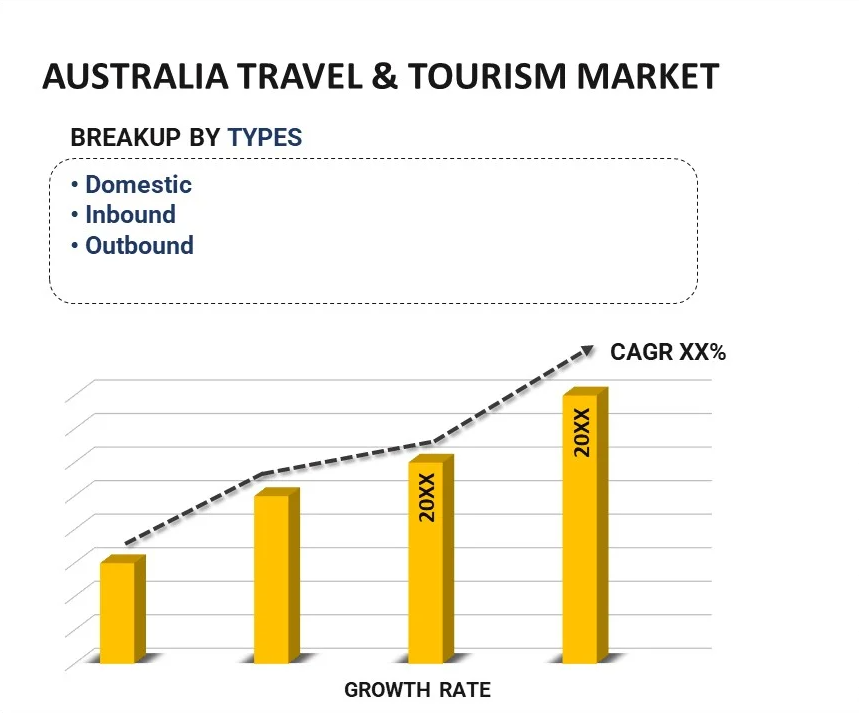
Australia’s adventure tourism industry is experiencing exponential growth, driven by rising demand for outdoor experiences, sustainability efforts, and government investments. This trend is further reinforced by the steady expansion of the Australia travel economy, which continues to generate jobs, increase visitor spending, and support regional development. As the market continues to expand, innovation and responsible tourism practices will be key to sustaining this momentum. With a promising future ahead, Australia is poised to remain one of the world’s premier adventure tourism destinations through 2031 and beyond.
The post Australia’s Adventure Tourism Market Set for Explosive Growth by 2031 appeared first on TheAussieway.
]]>The post How Australia’s Native Ingredients Taste appeared first on TheAussieway.
]]> 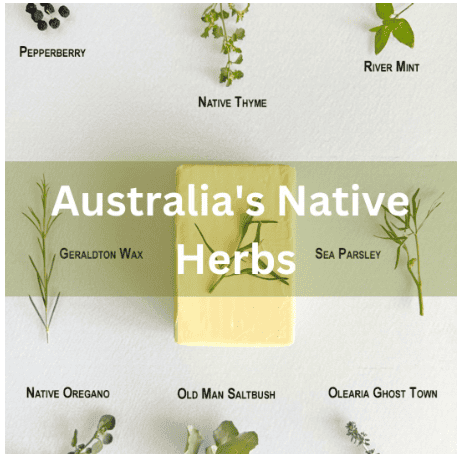
Australia’s Aboriginal and Torres Strait Islander communities have been harnessing the power of these native ingredients for centuries and are using them for traditional medicinal purposes and building delicious menus. Let’s look at the list of these remarkable ingredients and understand what is so special about them that they are part of an Aussie lifestyle and what is behind those lip-smacking Australian dishes that tourists can’t resist.
1. Wattleseed
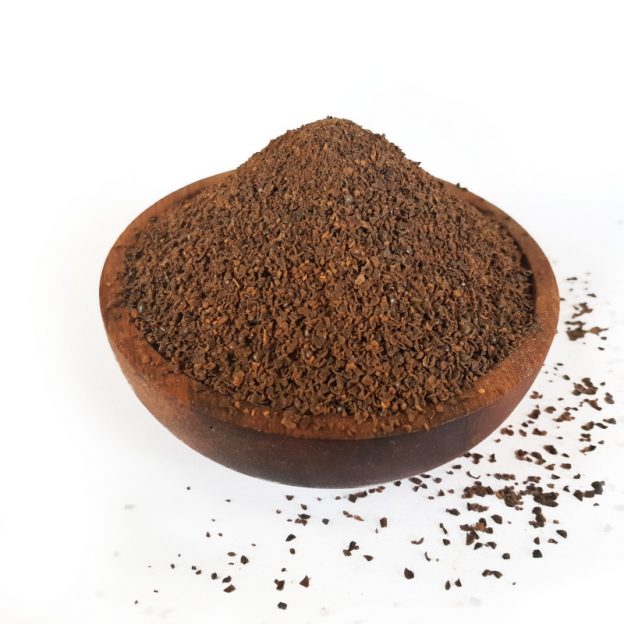 It is a versatile ingredient that is derived from the Acacia tree and has a nutty, roasted flavour. It is defined as the combination of chocolate, coffee, and hazelnut, which makes it a popular ingredient in baked foods, beverages, and desserts. It is rich in fibre and protein. It also offers nutritional benefits.
It is a versatile ingredient that is derived from the Acacia tree and has a nutty, roasted flavour. It is defined as the combination of chocolate, coffee, and hazelnut, which makes it a popular ingredient in baked foods, beverages, and desserts. It is rich in fibre and protein. It also offers nutritional benefits.
2. Kakadu Plum
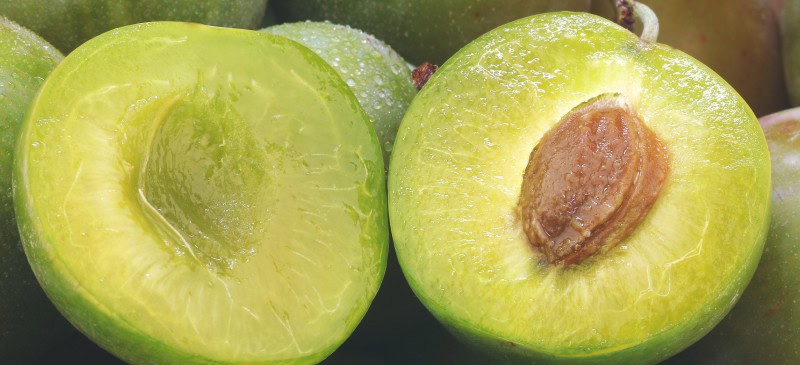
Kakadu Plum stands as a testament to the diverse and bountiful offerings of Australian native ingredients, which have gained a place as a vital resource for culinary exploration and holistic well-being. The lip-smacking tartness paired with vitamin C content not only boosts the immune system but is also ideal for collagen synthesis and antioxidant protection. It is yellow-green in colour and is used for jellies, jams, juices, etc.; it can be eaten fresh as well.
Wellness freaks, chefs, and nutrition experts have been attracted to this particular ingredient, which was also used by Aboriginal communities in traditional practices for generations. Its medicinal properties and bioactive compounds address many health issues.
3. Macadamia Nuts
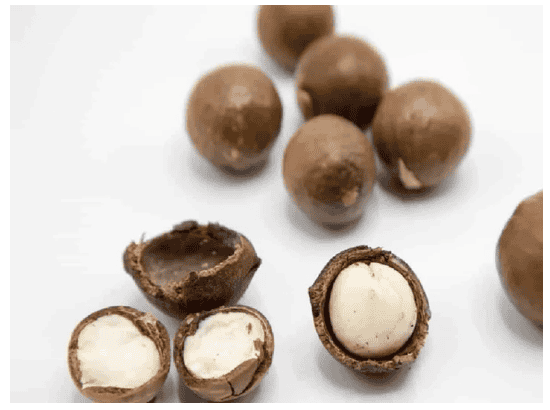
Traditionally called “kindal kindal” or “boombera” Macadamia nut stands as a testament to the country’s natural bounty and is renowned for its rich and buttery flavour. It was called so because it was used in trade items and nourishing properties. It has a crunchy texture and is a cherished ingredient in culinary creation and wholesome snacking.
This native Australian food ingredient is celebrated for its amazing taste, characterised by a creamy and indulgent flavour. It has a natural sweetness, a nutty undertone, an enjoyable texture element, and was once a delicacy amongst Aboriginal communities.
4. Bush Tomato
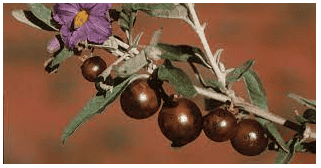 The bush tomato is a culinary treasure in Australia because it has a unique and intense umami flavour profile. It has a blend of sun-dried tomatoes, tamarillo, and caramel, which makes it a delicious food in Australia as it captivates the palate with its sweet and savory notes.
The bush tomato is a culinary treasure in Australia because it has a unique and intense umami flavour profile. It has a blend of sun-dried tomatoes, tamarillo, and caramel, which makes it a delicious food in Australia as it captivates the palate with its sweet and savory notes.
More than a food, it is an ingredient used in many Australian cuisines, lending a succulent taste to many dishes. Whether in modern gastronomic creations or traditional Aboriginal recipes, the bush tomato can enhance the flavors, and therefore, in culinary experimentation, it has secured a vital place.
5. Finger Limes
 The finger lime, also called Citrus Caviar, has a true taste sensation. The pearl-like vesicles burst with a zesty lime flavour which offers a very pleasing contrast. It has good nutritional properties, like being rich in Vitamin C, and folate, and it can ward off many chronic and mild illnesses.
The finger lime, also called Citrus Caviar, has a true taste sensation. The pearl-like vesicles burst with a zesty lime flavour which offers a very pleasing contrast. It has good nutritional properties, like being rich in Vitamin C, and folate, and it can ward off many chronic and mild illnesses.
Citrus fruits are also loaded with water so they can keep you in good health as they have the best vitamins, antioxidants, minerals, etc. Finger lime is a thorny shrub found in the forests of Australia and is available in six genetically diverse varieties. It has a sour taste and a strong fragrance.
6. Crocodile
 A unique and healthy delicacy of Australia is crocodile meat, which hails from northern regions and offers a surprising blend of nutrition and flavour. It is a source of lean protein with great taste and amazing health benefits. With low fat, high protein levels, and rich omega-3 fatty acids, it becomes a wholesome choice that complements the modern dietary preferences of an Aussie lifestyle.
A unique and healthy delicacy of Australia is crocodile meat, which hails from northern regions and offers a surprising blend of nutrition and flavour. It is a source of lean protein with great taste and amazing health benefits. With low fat, high protein levels, and rich omega-3 fatty acids, it becomes a wholesome choice that complements the modern dietary preferences of an Aussie lifestyle.
It is a versatile ingredient, and the flour profile carries echoes of chicken and a nuanced fishy undertone that adds depth to every bite you take. It is used in many culinary creations and is common in northern areas. When it is grilled and marinated, it can be used in stews, gourmet burgers, etc.
7. Quandong
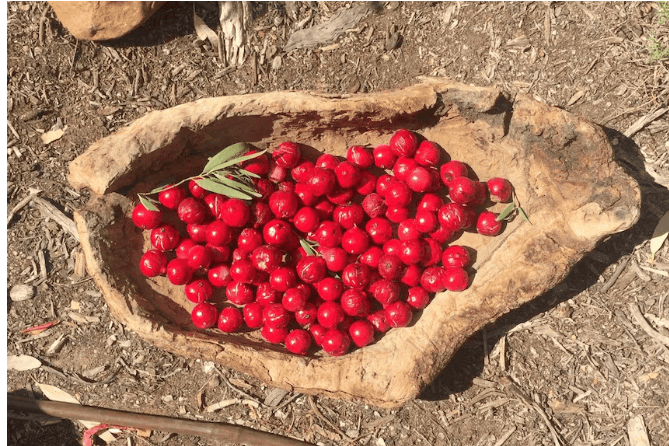
Available in arid parts of the country, Quandong offers a tart taste, is red and has a dry texture. The flavour is slightly salty and sour. The sweetness varies significantly between trees. It is a vibrant fruit whose kernel contains a range of complex oils and has antibacterial and anti-inflammatory qualities. It is a culinary delight enjoyed in stewed, dried or raw form.
8. Lemon Myrtle
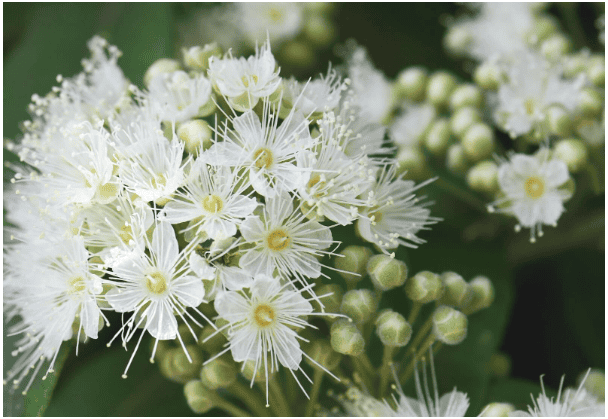
If you are looking for a vegan source of calcium, Lemon Myrtle, a shrub with versatile leaves is an exceptional choice. It offers a vibrant citrus aroma giving a refreshing and tangy taste. It has powerful antimicrobial and antifungal properties. It’s a popular ingredient used in many snacks. Many scientists believe that the minerals in Lemon Myrtle help synthesise and self-repair human DNA.
9. Green Ants
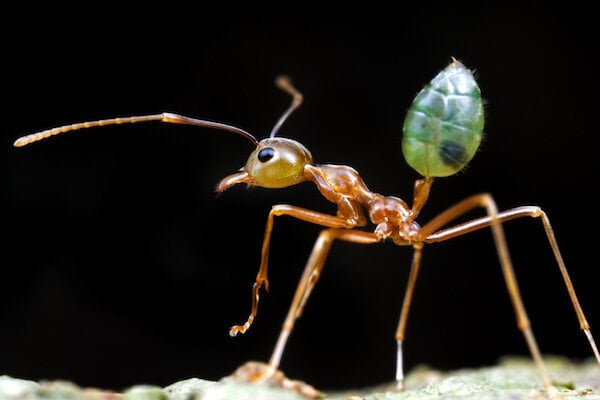
Green ants, also known as Oecophylla smaragdina, are a sought-after food ingredient known for their unique taste and cultural significance. The tiny insects offer a citrusy tang and are ideal for those looking for a zesty flavour. For sweet and savoury creations, ants’ flavour adds complexity and excitement. It is rich in antioxidants and vitamin C and also offers healing properties. These are used as garnishes and flavour enhancers by chefs and offer a truly unforgettable gastronomic experience.
10. Saltbush
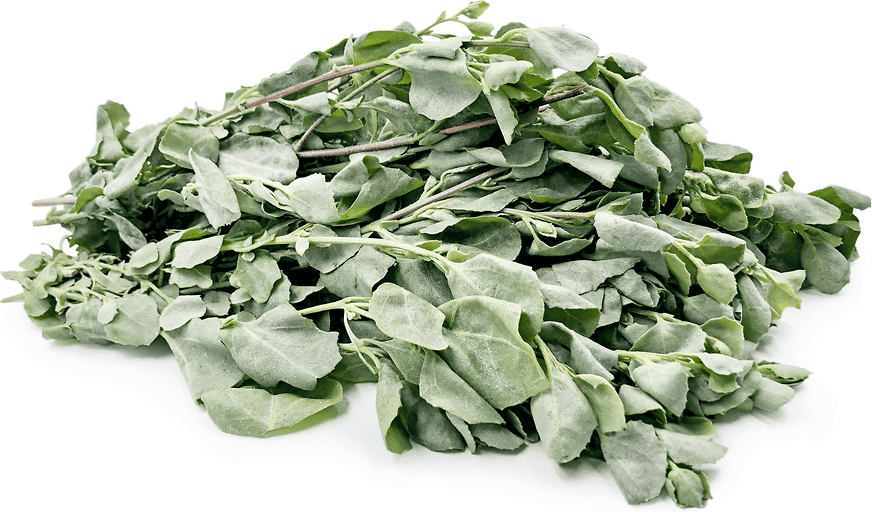 One of the best native herbs in Australia is the saltbush. It is a versatile and edible shrub with silvery green leaves that grows wild across most of the country. The leaves are fleshy with a salty herbal flavour and used fresh for salads or as a bed for roasted meats like fish, lamb, etc. Dip and fry them in the batter, or use dried leaves for seasoning. It is rich in minerals like sodium and potassium, vitamin A, vitamin C, antioxidants, fibre, etc. It offers many nutritional benefits but is not consumed in large quantities.
One of the best native herbs in Australia is the saltbush. It is a versatile and edible shrub with silvery green leaves that grows wild across most of the country. The leaves are fleshy with a salty herbal flavour and used fresh for salads or as a bed for roasted meats like fish, lamb, etc. Dip and fry them in the batter, or use dried leaves for seasoning. It is rich in minerals like sodium and potassium, vitamin A, vitamin C, antioxidants, fibre, etc. It offers many nutritional benefits but is not consumed in large quantities.
Wrap Up..
The native ingredients in Australia’s local food are great for pleasing the taste buds and improving your health. The remarkable tapestry of flavours is also delightful, and it reflects the diverse landscape of the country with an indigenous heritage. The ingredients captivated the culinary world, and apart from a rich and exquisite taste, the unique ingredients pay homage to Australia’s rich heritage and meet the diverse requirements of people looking for fresh, tasty, and clean food.
The post How Australia’s Native Ingredients Taste appeared first on TheAussieway.
]]>The post Government’s September Initiatives: How It Is Helping Millions of Aussies Keep Up with the Cost of Living! appeared first on TheAussieway.
]]>
Cost of Living crisis:

Both citizens and policymakers are struggling with the rising cost of living Australia. The expenses have increased in areas like utilities, housing, and groceries. These basic necessities have become a concern for Australians, and many families are finding it challenging to pass through this difficult hurdle. The impact of the COVID-19 pandemic has made things worse and exacerbated this issue. Therefore, the government has to step in and take some supportive measures to help the people manage this phase.
What September Month Will Bring for Australians?

Image Credit: https://www.slideshare.net/slideshow/governments-september-initiatives-cost-of-living-australia/261103576
As the month of September arrives, these important government measures will help eliminate the cost of living strain. These September initiatives will cover a wide range of areas, including financial assistance, housing support, and more, that are poised to make a significant impact in the lives of countless Australians.
The key initiatives will be as follows:
- Financial Assistance: The government is going to offer direct support to Australians by giving them financial assistance. Assistance will be provided to eligible individuals and families so they can manage their daily expenses.
- Housing Support: Many Australians are going through a housing crisis, so the government will address their housing crisis and Adopt reforms. The government will implement the changes, including rent relief programs, and take initiatives to make housing budget options affordable.
- Education And Health: Initiatives related to education and healthcare costs will be worked upon. It will help the families manage their healthcare and education budgets in an appropriate way through government measures.
- Utilities and Bill Relief: Australians will get access to essential services like utilities and manage their utility bills precisely. Those undergoing financial hardship will have complete support through these schemes.
- Tax Relief: The government will offer tax rebates and tax breaks to ease the tax burden on lower and middle-class income earners.
When time is unpredictable, unprecedented Support is the need of the hour
These government initiatives reflect the commitment to assist those who are facing hardships and many other economic challenges to support themselves and their families. The government will offer relief to those who are struggling with the rising cost of living. The vast range of support measures offered by the Government highlights the comprehensive approach taken towards the complex issues faced by Australians.

Though these initiatives offer a ray of hope to millions of Australians, they also manifest the importance of timely government intervention during these unprecedented times. This holds great importance as the nation is facing economic challenges. This is a task of economic recovery where several measurements serve as a testament to the government’s dedication to the welfare of its citizens.
However, these steps taken by the government will not provide immediate relief to the citizens, but they will contribute to the overall economic stability and well-being of the people and families trying to fight the daily challenges every day. It will at least bring some relief to the people.
Final Words:
In these challenging times, the commitment of the government to support the cost of living is a beacon of hope for many Australians. As September begins, the government has promised a bright future to countless households across the country.
The post Government’s September Initiatives: How It Is Helping Millions of Aussies Keep Up with the Cost of Living! appeared first on TheAussieway.
]]>The post 10 Australian Startups In 2023 That Can Change Aussie Lifestyle appeared first on TheAussieway.
]]>
From tropical beaches to aboriginals, cute koalas, rolling wines, and lush rainforests, there’s nowhere like Australia.
Besides, being a tourist hub, Australia is also where businesses thrive, especially startups.
Brands like Gleam and Canva are first-hand examples. Currently, the numbers look pretty impressive, with more than 1800 neo-age brands making an impact.
The reasons aren’t obscure enough to scan.
A. A rock-solid economy: Australia is the 13th among large economies that haven’t witnessed recession for over a couple of decades. Also, this nation has a pretty low unemployment rate and shows stable growth.
B. Strong and uncompromised VC funding: With more than 100 VC firms investing in Australia, coupled with incubators and accelerators, startups are blessed with early-stage boost-ups. Take 2022, for instance, when Australian startups raised no less than $5.1 Billion. Surprisingly, it’s a drop from 2021. Now, that’s growth right there.
C. Proactive support from the government: Perhaps one of the most compelling reasons why Australian startups stay profitable is the push from the government. Whether it’s small grants or the ambitious Startup Year Program launched in 2022 aimed at bringing more entrepreneurs to the mainstream market, there’s no dearth of motivation.
Here’s a look at 10 promising Australian startups in 2023 that can impact the Aussie lifestyle.
Dovetail

Dovetail is 2017 Australian marketing startup operating out of Sydney. It is a SaaS solution platform that works towards aggregating customer feedback and research under one roof.
In short, Dovetail makes it easy to monitor customer satisfaction and incorporate necessary changes every now and then.
Since they began, Dovetail has been through some high-profile funding, including a $63 Million Series A round led by Accel in 2022. No wonder, Dovetail’s business model has become popular in no time.
The company at a glance
Key People: Benjamin Humphrey, Bradley Ayers
Location: Sydney
Number of employees: 51-100
Area of focus: Customer Research
Similar organizations: POTLOC, Crowd Analyzer, and Tetra Insights
Athena

Another 2017-born Aussie startup, Athena, is headquartered in Sydney and is a rising star in the fintech space.
As a solution provider organization, they help individuals accelerate their home loan repayment and simplify the process of purchasing a home.
By connecting homeowners and prospective homeowners with ethical investors, Athena has been able to successfully address the most pressing demands. The company set a new record for the largest fundraising ever achieved by an Australian company in May 2021 (a whopping $90 million).
The company at a glance
Key People: Michael Starkey, Nathan Walsh, Rex V. Job
Location: Sydney
Number of employees: 101-250
Similar organizations: Lendi, Grapple, Shift
Eucalyptus

Eucalyptus came into existence in 2019.
Headquartered in Haymarket, they operate within the healthcare sector, offering brands a chance to widen their scope of aid to individuals for healthcare services across the country.
Over the years, the company has helped at least 250,000 patients receive improved healthcare support. Eucalyptus has also successfully secured funding through multiple rounds, including a notable $42 Million Series C round in January 2022.
The company at a glance
Key People: Alexey Mitko, Benny Kleist, Charlie Gearside, Tim Doyle
Location: Haymarket
Number of employees: 51-100
Area of focus: Healthcare
Similar organisations: Tendo, Syllable, Pera Labs
OCR Labs

OCR Labs had a humble beginning in 2014. Currently, its headquarters are in Sydney, where the company is emerging in the world of fully automated identity verification.
As a tech-driven company, OCR Labs has made it possible for individuals to access identity verification needs remotely no matter the geographical position. This, in turn, has dramatically reduced the vulnerability to fraudulent activities utilizing biometric data.
OCR Labs has also secured multiple rounds of funding, including a Series B in February 2022 ($30 Million raised).
The company at a glance:
Year Founded: 2014
HQ: Sydney, New South Wales, Australia
Size: 11-50
Key People: Daniel Aiello, Matthew Adams
Similar companies: Onfido, Jumio
Judo Bank

As a technology-driven lender, Judo is essentially a neobank specializing in financing solutions for small and medium-sized enterprises. Furthermore, it also offers a variety of personal term deposit products to individuals.
As of January 2020, Judo Bank has successfully extended loans worth $1B to Australian small businesses, while also accumulating $1B in digital retail term deposits.
The company at a glance
Year Founded: 2016
HQ: Melbourne
No. of employees: 101-250
Key People: Alex Twigg, Chris Bayliss, David Hornery, Joseph Healy, Kate Keenan, Tim Alexander
Similar companies: Onfido, Jumio
Marketplacer

As a come-of-age SaaS platform, Marketplacer offers a range of tools and functionalities to help create expandable online marketplaces.
Marketplacer has an impressive track record, having played a crucial role in the development and implementation of more than 100 Marketplaces, and successfully connecting over 16,000 businesses globally.
The company at a glance
HQ: Melbourne
Year founded: 2007
Key people: Jason Wyatt, Sam Salter
Number of employees: 101-250
Similar companies: Yo! Kart, Yelo, Logicbroker
Mr Yum

With an innovative menu ordering system, Mr Yum offers versatile options for ordering to meet the preferences of customers. Whether dining at the table, relaxing on the couch or planning a takeaway, food ordering has never looked so innovative.
Mr. Yum’s platform is totally web-based which means you will never have to download an app. Simply scan a QR code, and voila! You have the Mr Yum menu right on your screen.
Further, the menu has filters like vegan, vegetarian, and gluten-free options. It also offers translation into five different languages, detailed ingredient definitions, and eye-catching photos of each dish.
The company at a glance:
HQ: Collingwood
Year founded: 2018
Key People: Adrian Osman, Andrei Miulescu, Kimberly Teo
Number of employees: 11-50
Similar companies: Onfleet, Open Tables
Relectrify

As a 2015 startup, Relectrify is headquartered in Melbourne and specializes in enhancing batteries and optimizing their performance. Their innovative technology allows for the complete utilization of each cell’s capabilities, resulting in improved efficiency.
Additionally, it also reduces costs by generating AC output without the need for an external reverter.
Relectrify has successfully secured multiple funding rounds, including a significant investment from Energy Innovation Capital, although specific financial details of this latest round remain undisclosed.
The company at a glance:
Year Founded: 2015
HQ: Melbourne, Victoria, Australia
No. of employees: 11-50
Key people: Daniel Crowley, Valentin Muenzel
Similar companies: Octave, Cling Systems
Sendle

As a pioneer in carbon-neutral services in the Australian courier industry, Sendle certainly is a one-of-a-kind startup helping small to medium-sized Australian businesses as well as online retailers.
COVID-19 was certainly a boost for Sendle with their business expanding further across the US.
Sendle also successfully secured financing of $35 million in a 2021 Series C funding led by AP Ventures, backed by Afterpay, along with returning investors like Federation, Full Circle, and NRMA.
The company at a glance:
Year founded: 2014
HQ: Sydney
KeyPeople: Craig Davis, James Moody, Kohei NISHIYAMA, Sean Geoghegan
Number of employees: 1-10
Similar companies: Eddress, Xcelerator.
HealthMatch

As a digital healthcare company, HealthMatch aims to revolutionize the process of connecting patients with clinical trials.
The Aussie startup uses advanced machine learning technology to match patients in real time with trials aligned to specific medical profiles. Alongside, the extensive use of artificial intelligence, it helps analyze clinical data and significantly expedite patient recruitment and recovery.
The company at a glance:
Year founded: 2017
HQ: Sydney
Key people: Manuri Gunawardena
Number of employees: 1-10
Similar companies: Six Physio, RichFeel, Cortica
The post 10 Australian Startups In 2023 That Can Change Aussie Lifestyle appeared first on TheAussieway.
]]>The post What Is Food Insecurity? How Australian Are Suffering From It? appeared first on TheAussieway.
]]>
The Aussie lifestyle is also characterized by a love of food and drink, with a diverse culinary scene that reflects the country’s multiculturalism. Barbecues, or “barbies,” are a staple of Australian social life, and Australians enjoy a range of international cuisines as well as local specialities such as meat pies and Vegemite. Though Australia is known for having a high standard of living and, for the most part, access to some of the best foods on earth, you might be surprised to hear that Australia is also a country with food insecurity.
The phrase “food insecurity” refers to the inability of people or households to regularly obtain sufficient and nourishing food. It is a complicated problem that has a global impact, including in Australia. Australia, one of the richest nations in the world, still suffers from food insecurity, with a sizeable percentage of the population finding it difficult to regularly access nutritious food. In this article, we will explore the definition of food insecurity, the causes of food insecurity in Australia, and the impact it has on the Australian population.
What is food insecurity?

When people or households do not have enough food to satisfy their nutritional needs for an active and healthy existence, this is known as food insecurity. It can be caused by various factors such as poverty, unemployment, low wages, inadequate social security, and limited access to food outlets.
According to a report by the Australian Bureau of Statistics, food insecurity affected about 4% of Australian households at some point in the years 2017–2018, which is a growing concern in Australia. However, since not all households suffering from food insecurity may report it, the actual level of food insecurity in Australia may be higher.
Food Insecurity in Australia

Recent studies have shown that there is a rising problem of food insecurity in Australia, affecting about 5% of the population. These figures might understate the severity of the issue, though, as many people and families might be hesitant to ask for assistance out of fear of embarrassment or stigma.
Economic inequality, unemployment, high food costs, and restricted access to healthy food choices in some areas are some of the factors influencing food insecurity in Australia. Additionally, certain populations are more likely to experience it, including low-income families, single-parent homes, and Indigenous Australians.
According to a report by the Foodbank Hunger Report 2021, more than 1 in 5 Australians (21%) have experienced food insecurity at some point in the past 12 months. The report also found that the COVID-19 pandemic has exacerbated food insecurity, with more than one-third of Australians experiencing food insecurity reporting it for the first time due to the pandemic.
There are several reasons for food insecurity in Australia. One of the main causes is poverty. Many low-income individuals and families are unable to afford nutritious food and may rely on cheap, unhealthy options instead. According to a report by the Australian Council of Social Service (ACOSS), over 3 million Australians live below the poverty line, with many struggling to afford basic necessities such as food, housing and healthcare.
Food insecurity has a range of social impacts in Australia, particularly for those who are marginalized or living in poverty. Some of the key social impacts of food insecurity in Australia include:
- Health impacts: Food insecurity can lead to poor health outcomes, including malnutrition, obesity, and diet-related diseases such as diabetes and heart disease. Children who experience food insecurity are also more likely to experience developmental delays and poor academic outcomes.
- Social exclusion: Food insecurity can contribute to social exclusion and marginalization, particularly for those who are already vulnerable or marginalized. This can make it difficult for individuals and communities to fully participate in Australian society.
- Poverty: Food insecurity is closely tied to poverty, and can contribute to a cycle of poverty and social exclusion. Those who are food insecure may struggle to afford basic necessities such as rent and utilities, and may also experience other forms of material hardship.
- Mental health: Food insecurity can have negative impacts on mental health, leading to stress, anxiety, and depression. This can be particularly true for parents who are unable to provide sufficient food for their children.
- Environmental impacts: The food system is a major contributor to greenhouse gas emissions and environmental degradation, and food waste is a significant issue in Australia. Addressing food insecurity while promoting sustainability is an important challenge for society.
- Indigenous health: Indigenous Australians experience higher levels of food insecurity than the broader population, and this can have significant impacts on Indigenous health. Indigenous Australians experience higher rates of diabetes, heart disease, and other diet-related health issues than the broader population.
Causes of food insecurity in Australia

Many underlying factors contribute to food insecurity in Australia, making it difficult for people and households to access or afford enough food to satisfy their basic nutritional needs. These root causes for food insecurity have many facets and are susceptible to a variety of societal, economic, and environmental influences. Some of the main reasons for food instability in Australia are listed below:
- Poverty: Low-income households in Australia are more likely to experience food insecurity due to poverty, which is a major contributor to the problem. Unemployment, underemployment, poor wages, and a lack of access to education and training are just a few of the complex causes of poverty. Lack of money brought on by poverty can make it difficult for families to buy enough food.
- High food prices: Food is expensive in Australia, particularly when it comes to wholesome and nourishing choices. Low-income households may find it challenging to get the food they require to keep a healthy diet as a result. Food waste can also be a result of high food prices, which may cause households to discard food that they cannot afford to eat.
- Limited access to wholesome food choices: Access to wholesome food options is a problem in many communities, particularly those that are rural or remote. The lack of supermarkets and grocery stores, the scarcity of public transportation, and the high expense of transportation may all contribute to this. Food insecurity can be exacerbated by households finding it challenging to keep a healthy diet due to a lack of access to healthy food options.
- Food waste: Up to 40% of Australian food production is lost or squandered, making it a serious issue in Australia. Throughout the food system, including during manufacturing, distribution, and consumption, food waste is possible. By lowering the quantity of food that is available for consumption, food waste can exacerbate food insecurity.
- Climate change and environmental degradation: These two factors can have a significant effect on the availability and production of food. Droughts, floods, and other extreme weather conditions brought on by climate change may harm crops and lower food output. Food insecurity is a result of environmental degradation such as soil erosion and river pollution, which can also lower food output.
- Systemic inequalities: By limiting access to chances and resources, systemic inequalities like racism, sexism, and classism can cause food insecurity. For instance, Indigenous Australians, who have traditionally been marginalised and deprived of their basic rights, are more likely to suffer from food insecurity due to their restricted access to opportunities and resources.
Food insecurity in Australia disproportionately impacts certain groups of people, particularly those who are marginalized or living in poverty. Some of the most impacted groups include:
Indigenous Australians:
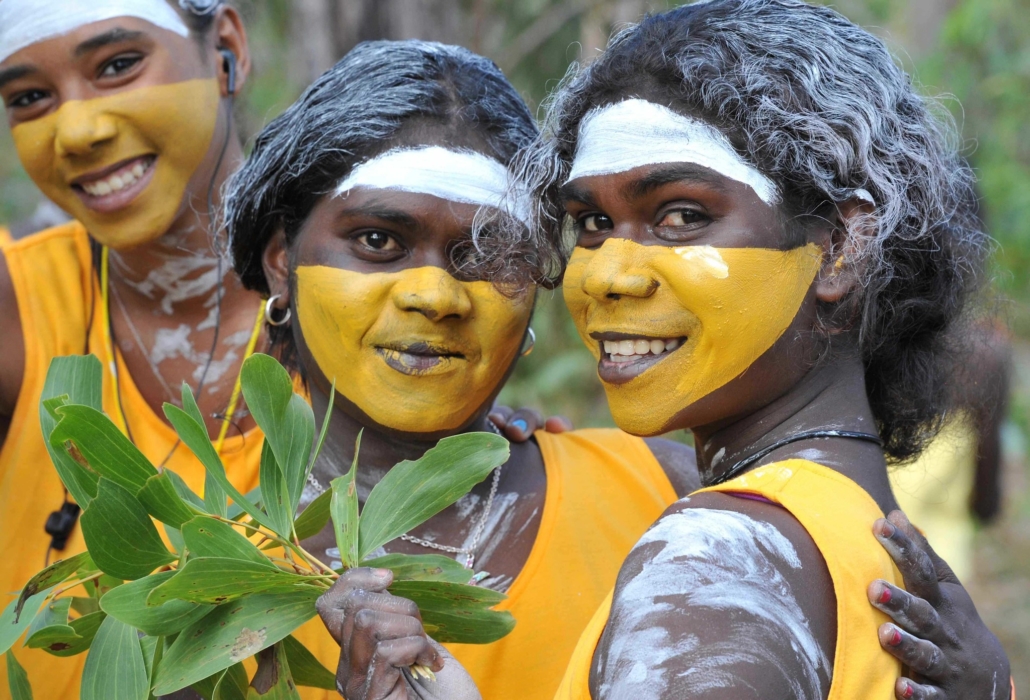
Indigenous Australians are one of the most disadvantaged groups in Australia and are more likely than non-Indigenous Australians to face food insecurity. Approximately 20% of Indigenous Australians suffer food insecurity, compared to 4.6% of non-Indigenous Australians, according to the Australian Bureau of Statistics.
The historical marginalisation of Indigenous Australians, the difficulty finding affordable, wholesome food in remote regions, and the effects of colonisation on Indigenous food systems and practises are just a few of the causes of this disparity.
Low-Income Households:
Recent studies have shown that low-income families are also more likely to experience food insecurity, with up to 30% of those making less than $600 per week reporting such a condition. This is a result of Australia’s high cost of living, which includes high housing costs and sometimes leaves little money for other needs like food.
Single-Parent Households:
Another group that is more vulnerable to food insecurity is single-parent households; according to recent research, up to 25% of single-parent households experience food insecurity. This is brought on by the financial burden of raising children alone and the lack of readily available, inexpensive, and wholesome food choices.
The Impact of COVID-19:

In Australia, the COVID-19 pandemic has made food insecurity worse as many households have lost their jobs or experienced revenue declines. Since the start of the pandemic, Foodbank Australia reports that the demand for food relief has risen by up to 50%, with many households turning to food banks and other charities for help.
As a result of some communities and populations being disproportionately impacted by food insecurity, the pandemic has also brought attention to the inequities in the food system. For instance, with limited transportation and high food costs, Indigenous communities in remote regions have encountered additional difficulties obtaining food during lockdowns.
Addressing Food Insecurity in Australia

An estimated 15% of the population in Australia experiences food insecurity at some time, making it a serious problem. Lack of access to enough wholesome food to live an active and healthy existence is known as food insecurity.
Here are some possible solutions to food insecurity in Australia:
- Increase social security payments: To help individuals and families finance essentials like food, the Australian government can raise social security payments like the JobSeeker and Youth Allowance. This may lessen the number of people who are food insecure.
- Improve access to fresh food: Increasing access to fresh food is important because it is difficult to find healthy food in many low-income regions. To increase the availability of fresh and healthy foods, the government can give subsidies to farmers’ markets and induce grocery stores to open in these locations.
- Increase support for food banks and charities: Boost donations to food banks and charities because they are essential in helping those who cannot purchase food. In order to assist these organisations in distributing food to more people in need, the government can boost funding and support for them.
- Address underlying issues: Over time, the number of people who are food insecure can be decreased by addressing underlying problems like poverty, unemployment, and a shortage of affordable housing.
- To guarantee that everyone in Australia has access to healthy, affordable food, it is critical to handle food insecurity. The aforementioned steps can be taken to decrease the number of individuals who are food insecure and enhance Australians’ general health and well-being.
Conclusion

When people or families lack access to enough food that is safe, nourishing and meets their dietary requirements and preferences for an active and healthy lifestyle, it is said that they are experiencing food insecurity. Mild to serious, temporary or persistent, food insecurity can exist.
With an estimated 4 million Australians experiencing food insecurity at some time each year, it is a serious problem in Australia. This includes people and families who find it difficult to purchase healthy food, those who live in remote or regional areas, and those who have limited access to supermarkets and fresh produce.
In Australia, where many people have lost their employment and are struggling to make ends meet, the COVID-19 pandemic has made the problem of food insecurity worse. Food banks and charities all over the nation are seeing an increase in demand for food assistance as a result of this.
Malnutrition, chronic illness, mental health issues, and poor scholastic performance are just a few of the negative effects of food insecurity on one’s health. A multifaceted strategy is needed to address food insecurity in Australia, including expanding access to affordable and wholesome food, helping those in need financially, and promoting neighbourhood-based programmes that advance food security.
The post What Is Food Insecurity? How Australian Are Suffering From It? appeared first on TheAussieway.
]]>The post 10 Aussie Traditional Grooming Habits You Might Follow appeared first on TheAussieway.
]]>
Australia is a nation renowned for its distinct culture, wide variety of wildlife, and breathtaking scenery. But Australia also has a rich grooming culture that has developed over time, in addition to its inherent beauty. Australian grooming customs are geared towards enhancing innate beauty, well-being, and good health. For many Australians, these customs have been passed down through the generations and are an essential part of their “Aussie lifestyle”.
In this article, we’ll look at ten of Australia’s most well-liked traditional hygiene customs that you might want to incorporate into your daily routine. These traditional grooming habits and practices can help you feel and appear your best while embracing the Aussie lifestyle, whether you’re an expat or a local.
Daily Shower

Natural showering is becoming more popular both in Australia and around the globe. Conventional shower products like soaps, shampoos, and conditioners, which can contain harsh chemicals that can irritate the skin and damage the ecosystem, are becoming less popular among consumers in favour of natural alternatives. Natural products, on the other hand, are created using ingredients derived from plants, which are kind to the ecosystem and the skin. Organic soaps, sulfate-free shampoos, and moisturising body washes without parabens, artificial scents, or other harmful additives are a few famous natural shower products. Daily bathing with natural men grooming products can support sustainable living principles and encourage the development of healthy, nourished skin.
Using Natural Products

As more people become conscious of the potential harm caused by conventional men grooming products having synthetic ingredients, using natural products is becoming more and more popular in Australia and across the globe. Natural products are manufactured from plant-based ingredients and don’t contain possibly dangerous chemicals like parabens, sulphates, synthetic fragrances, or other harmful additives. Natural skincare products contain natural ingredients such as aloe vera, tea tree oil, and eucalyptus, which help to promote healthy and glowing skin. Australians also prefer to use natural exfoliants such as sugar or coffee grounds to remove dead skin cells and promote healthy skin. These products nourish and nurture the skin at the same time have environmental benefits, minimising their negative effects on the globe. Natural products offer a sustainable alternative to conventional products in a variety of categories, including skincare, haircare, makeup, and domestic cleaning supplies.
Applying Sunscreen
:max_bytes(150000):strip_icc():format(webp)/GettyImages-1047792178-2000-3d68fd19552d4122ac072f14cb265b45.jpg)
Due to the high UV radiation levels in the nation, donning sunscreen is especially crucial. The Australian government has started a number of public health initiatives urging people to use sunscreen, wear hats and other protective clothing, look for shade, and limit their time spent in the sun during peak UV periods.
UV rays from the sun can result in sunburn, premature ageing, and an elevated chance of skin cancer. Even on gloomy or overcast days, it is advised to wear sunscreen because UV rays can pass through the clouds. Additionally, sunscreen needs to be reapplied every two hours, or more often if you are swimming or perspiring.
When selecting a sunscreen, it is important to choose one that provides broad-spectrum protection, which means it protects against both UVA and UVB rays. The sunscreen should also have an SPF (Sun Protection Factor) of at least 30, which blocks 97% of the sun’s UVB rays. Sunscreen should be applied to all exposed areas of the skin, including the face, neck, arms, and legs.
Use Of Essential Oils

Australians love essential oils and use them for a variety of purposes. Essential oils such as lavender, peppermint, and tea tree are commonly used in aromatherapy to promote relaxation, reduce stress, and improve overall well-being. They are also used in skincare products and hair care to promote healthy hair and skin.
Brushing Teeth Twice a Day

Dental hygiene is another one of the most essential traditional grooming habits that Australians follow. Brushing teeth twice a day, in the morning and before bedtime, is essential for maintaining healthy teeth and gums. Australians also visit the dentist regularly for checkups and cleanings to maintain good oral hygiene.
Regular Exercise
Incorporating physical activity into one’s everyday routine is something that many Australians value as part of their culture. Exercises that fall under this category might include running, strolling, cycling, swimming, and yoga, among others. In addition to improving mental health and general fitness and well-being, regular exercise lowers the risk of developing chronic diseases like heart disease, diabetes, and cancer. A lot of people in Australia also partake in outdoor pursuits like hiking and surfing, taking advantage of the nation’s stunning natural surroundings and a favourable temperature. In Australia, it is encouraged to exercise every day, and many workplaces offer chances for workers to move during the workday.
Additionally, it is easier for Australians to maintain an active lifestyle thanks to the abundance of parks, beaches, and recreational areas that provide free or inexpensive fitness classes.
Using Natural Deo Or Antiperspirant For Excessive Sweat

Using natural deodorants or antiperspirants to stop sweating excessively is a traditional grooming habit that has been practised by Indigenous Australians for thousands of years. Instead of using commercial deodorants, which can contain harsh chemicals, Indigenous Australians relied on natural ingredients to control body odour.
One commonly used natural ingredient was tea tree oil, which has antibacterial properties that help to kill the bacteria that cause body odour. Native herbs and plants like eucalyptus and lemon myrtle were also used to control body odour and provide a pleasant scent.
Today, the use of natural deodorants and antiperspirants has gained popularity among people who are looking for a more natural and sustainable way to control body odour. These products are often made from natural ingredients like baking soda, coconut oil, and essential oils.
Proper Hair Care & Styling

Indigenous Australians also used native plants and herbs for hair care. Tea tree oil was used to treat scalp conditions, while macadamia nut oil was used to condition and strengthen hair.
Today, traditional hair care practices are still used by Indigenous Australians and have been incorporated into contemporary hair care and styling techniques. The use of natural ingredients like tea tree oil and macadamia nut oil in hair care products is popular not only in Australia but around the world.
While natural oils remain essential in hair care, breakthroughs in regenerative medicine, such as stem cell hair growth treatments, offer new possibilities for enhancing hair thickness and vitality.
Proper hair care and styling not only improve the appearance of hair but also promote healthy hair and scalp. This is an important aspect of traditional grooming habits and continues to be an important part of contemporary grooming routines.
Keeping Nails Trimmed and Clean
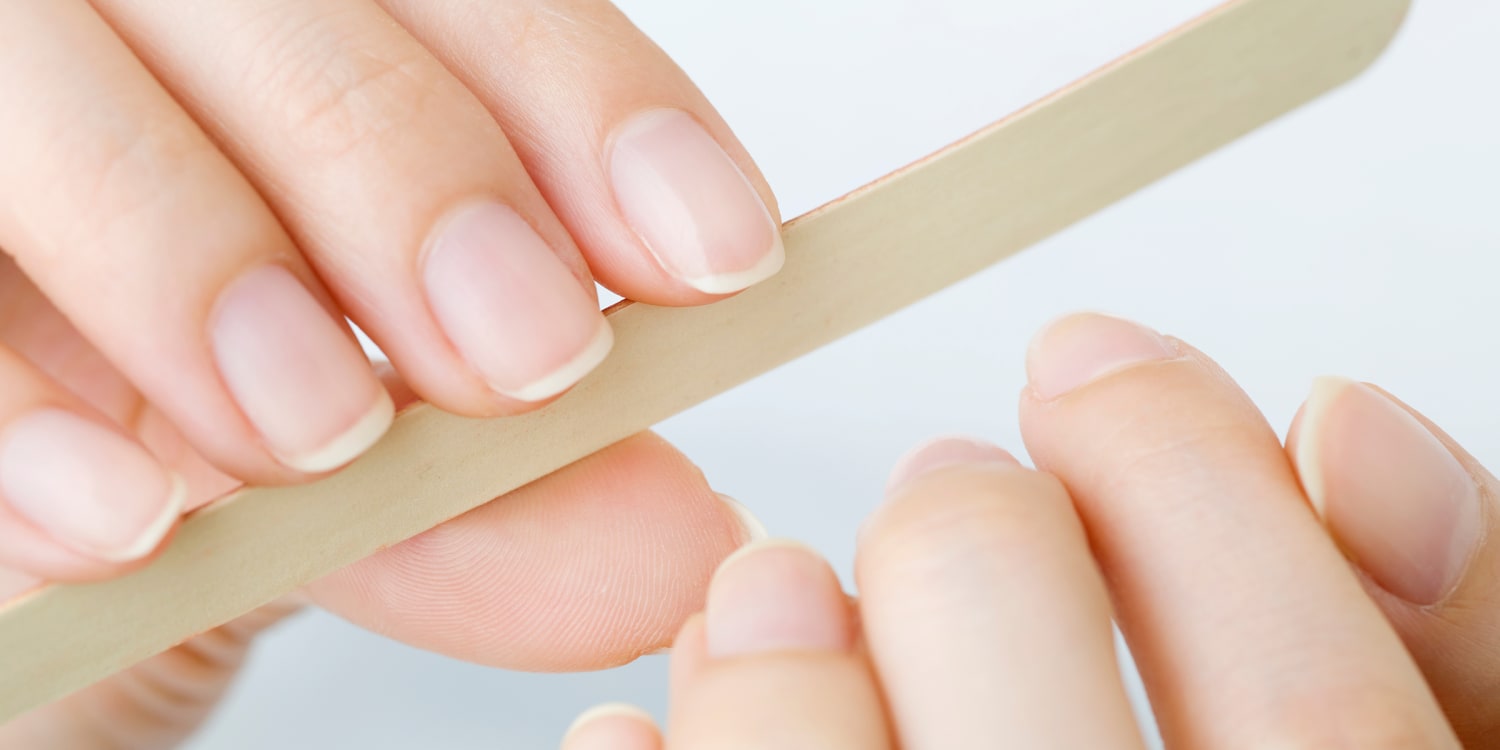
Keeping nails trimmed and clean is an important traditional grooming habit in Australia, as it is in many cultures around the world. Indigenous Australians used natural resources to keep their nails clean and healthy.
Women used emu feathers to remove dirt from under their nails, while men used sharp tools made from bone or stone to trim their nails. In addition to improving hygiene, keeping nails trimmed and clean also had ceremonial significance.
Nail care is important not only for hygiene but also for overall appearance. Well-groomed nails can make a positive impression in both personal and professional settings. As such, keeping nails trimmed and clean remains an important aspect of traditional grooming habits in Australia and continues to be practised today.
Ochre body paint

This has been used by Indigenous Australians for thousands of years as a traditional grooming habit. Ochre is a natural earth pigment that is obtained from various clay deposits found in different parts of Australia. It was used for a variety of purposes, including body painting, ceremonial purposes, and as a form of sunscreen.
Indigenous Australians used ochre to paint their bodies during ceremonies, dances, and other cultural events. The colours used depending on the region and the significance of the event. For example, red ochre was often used for war dances, while yellow ochre was used for initiation ceremonies.
In addition to its aesthetic value, ochre body paint also served practical purposes. It was used as a form of sunscreen, protecting the skin from the harsh Australian sun. Ochre also has antibacterial properties, which help to prevent infections.
Today, ochre body paint is still used by Indigenous Australians to connect with their cultural heritage and maintain their traditional grooming habits. It is also used in contemporary art, fashion, and design, showcasing the rich cultural history and artistic traditions of Indigenous Australians.
Conclusion
Australia is a nation renowned for its distinct culture, abundant fauna, and breathtaking natural beauty. Australia has a complex grooming culture, however, in addition to its natural beauty, which has developed over time. Australian grooming customs place a strong emphasis on enhancing one’s inherent beauty, well-being, and health. For many Australians, these practices are an essential part of daily living and have been passed down from generation to generation. We’ll look at ten of the most common Australian traditional grooming customs in this piece, which you might want to incorporate into your daily routine. Whether you live in Australia or are just visiting, adopting these traditional grooming habits can help you feel and look your best while embracing the culture.
The post 10 Aussie Traditional Grooming Habits You Might Follow appeared first on TheAussieway.
]]>The post Live Like Aussie Lifestyle appeared first on TheAussieway.
]]>
Imagine starting your day with a peaceful stroll to the bus stop along a stunning beach, grabbing a coffee on the way. When you arrive at your stop, there’s no crowd—just a breathtaking scene: nearly a hundred professionally dressed people standing on the promenade, gazing at a mother whale and her calf playing in Coogee Bay. That’s the lifestyle in Australia.
Everyone at work understands why you missed the morning meeting when you finally arrive, still glowing from the 7 a.m. concert.
The nature, the laid-back attitude towards working hours, and, of course, the overpowering sensation of having shared an experience, are all that is admirable about Australia and the Australian way of life.
For many Australians, the dream isn’t just about owning a house with a backyard, a pool, and maybe a dog—it’s about embracing a smart lifestyle that balances work, nature, and relaxation. But what is it about life in Australia that makes it so appealing to people worldwide?
Before we dive into why living in Australia is amazing, it’s also worth considering the downsides. Be sure to check out reasons why some people find Australia less exciting before making a big move!
However, if you love sunshine, outdoor adventures, and a laid-back work culture, the lifestyle in Australia might be perfect for you. Let’s explore what makes this country stand out.
The weather is fantastic and hot all the time
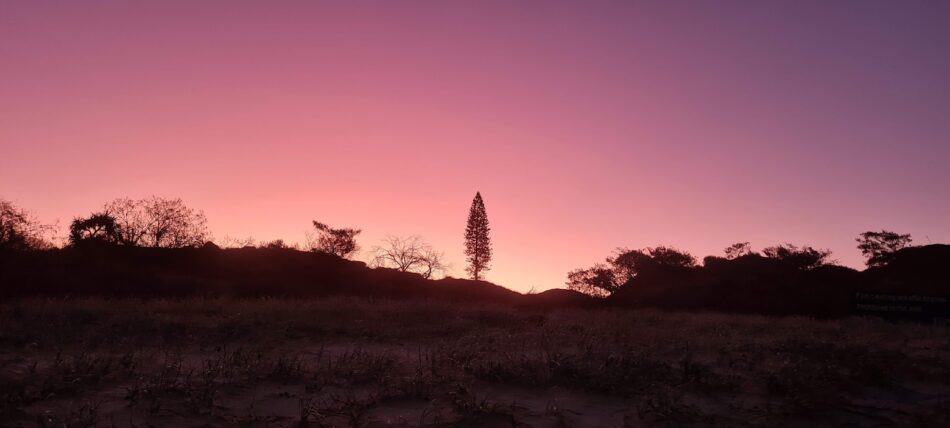
Australia is famous for its warm, sunny climate. But how hot it gets depends on where you live. If you’re dreaming of beach life year-round, Queensland is an ideal choice.
Even in winter, temperatures rarely drop below 19°C, making it possible to enjoy outdoor activities all year long. In fact, Brisbane has never seen snow, and autumn is almost nonexistent in some areas. If you love summer, you can enjoy warm nights in Brisbane without even needing a sweater!
Weekend beach trips

Beaches are an essential part of Australian lifestyle and culture. Most towns and cities are located along the coast, making beach outings a regular weekend activity. Whether it’s swimming, surfing, or just soaking up the sun, Australians make the most of their world-famous beaches.
With over 10,000 beautiful beaches, it’s nearly impossible to visit Australia without spending time at the shore. Some of the most popular beaches include:
Bondi Beach – Famous for its golden sands and lively atmosphere.
Manly Beach – A perfect spot with charming breakfast cafes nearby.
Byron Bay – Surrounded by breathtaking mountain views and a relaxed vibe.
The best part? Beaches in Australia are designed for convenience. You’ll find picnic areas, coffee shops, clean restrooms, and other facilities nearby, making a day at the beach effortless and enjoyable. Plus, it’s rare to find a “bad” beach—every shore in Australia offers something beautiful.
Get Unfussy AF.
Australians are relaxed and that is one of the greatest Australian lifestyle facts. We don’t easily become agitated. On Earth, we are the species that is most at ease. Just have a look at the conveniences we have built. We travel with an Esky (portable refrigerator) to keep drinks cool. The nightmare of an Australian is a hot beverage on a hot day.
Australian seating gadgets come in a huge variety. You’d be surprised. There is a chaise sofa for fishing. For a nap in the sun between two trees, there are many different types of hammocks available. There is a beach chair (with cup holder). You may unwind in the water at your nearby river or beach on a flotation lounge equipped with all the comforts you could need.
In Australia, laidback is a necessary component of every invention.
Why couldn’t you make being relaxed a priority in your life to reduce stress?
Greetings and Meetings

The informal and laid-back culture is reflected in the way Australians greet one another. A formal greeting will come out as aloof and uncomfortable. For instance, even when meeting someone for the first time, Australians converse on a first-name basis and avoid using titles.
When meeting someone, shake their hands firmly and proudly. You shouldn’t try to imitate an Australian accent or utter “G’day” or “G’day, mate” if you’re a visitor. This may come off as mocking and patronising. Just say “Hello/Hi” and “How are you?”
In Australia, there aren’t many subjects that are forbidden or taboo. However, avoid discussing sex, religion, politics, or race when you first meet someone. Asking someone their age, weight, or salary is also impolite.
Australians might be challenging to win over. When meeting someone for the first time, do not be put off by this conduct since even when they are impressed, they will not express it.
The Outside World

Australia has a wealth of outdoor activities, and enjoying the great outdoors is a significant aspect of Australian culture, this raises the quality of living in Australia. Simply being outside, going on coastal walks, going for walks in national parks, and strolling along the beaches are all a part of life here.
It is feasible to walk outside and enjoy the sunshine, the fresh air, and the great outdoors because the weather is so pleasant almost the entire year. There are so many wonderful parks in big cities, and along the coast, you can find hiking paths and coastal pools that are both simple to get to and breathtaking to experience.
Everybody is your “Mate”

While evaluating the pros and cons of living in Australia, we would be remiss if we failed to highlight how warm and inviting Australians are in my list of reasons why it’s nice to live here! Here, making friends is simple, and getting to know your neighbours is a big part of Australian culture.
Aussies frequently use the word “Mate.” You are my Mate even if we’ve only been in contact for five seconds. Everyone is first your friend rather than an adversary. An important aspect of Australian culture is mateship. How does a Mate act?
Mates are less harsh on one another.
Mates encircle themselves with other mates.
When a mate is in need, they assist one another.
Friends grill some food while exchanging tales.
Mates are simply other people who experience the same range of human challenges.
We take great pride in becoming everyone’s mate.
Australian partying

Image Credit: https://www.hostelworld.com/blog/10-of-the-best-places-to-party-in-australia/
Australia has numerous carnivals and festivals because few people know how to celebrate like Australians do. Face it, a significant portion of the Australian lifestyle is socialising and the nightlife.
Specifically, during the course of its 38-year existence, the Sydney Festival has expanded to become one of the world’s biggest celebrations of the arts and culture. More than 150,000 people have gathered to participate in the enormous festival of music, art, theatre, and cabaret, and it has been successful in drawing many well-known performers who are eager to give performances in front of wildly enthusiastic audiences.
Not to mention the enormous New Year’s Eve events held at the Sydney Botanical Gardens, which were simply amazing and made for one of the best nights of my life.
The majority of us have now spent NYE in Sydney Botanical Gardens twice, and both times have been (without a doubt) the BEST NYE celebrations, with everyone being so kind, entertaining and ready for a good time.
Having Blinders

Image Credit: https://www.linkedin.com/pulse/having-blinders-ongood-horses-bad-manufacturers-allison-deford/
Blinder indicates that you’re succeeding this time. It was an enjoyable game. The year has been successful. It’s been a good afternoon (afternoon). It was a wonderful wedding. It was a fun at the pool party. Your remarks were motivating.
We’ve all experienced “blinder” times. Recognizing other people’s blinders is the key. A little motivation may go a long way. You are capable of anything with the help of your friends.
The population of Australia is generally amicable
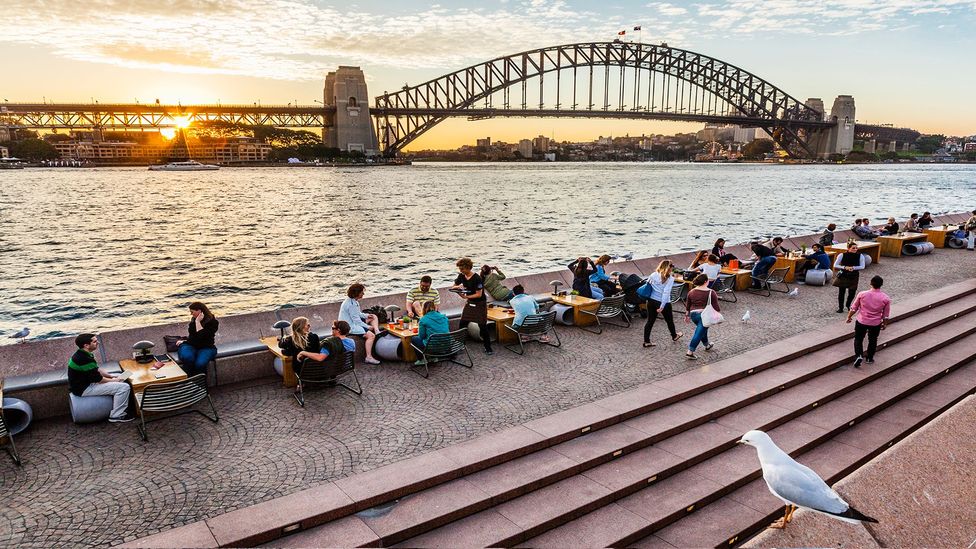
Most Australians are kind and friendly. When placing an order at a restaurant or cafe, an Australian will show respect for the wait staff. In Australia, there are no “lower class citizens.”
For instance, in America, saying “I’ll take that cake” in a cafe could be completely fine, but in Australia, you would say “Hi, Could I have have a coffee and the carrot cake? Simply saying “I’ll take the cake” can be construed as harsh.
Australians will typically offer warm, courteous assistance if you just need directions or some basic support.
Swearing

Australians have a high swearing rate. Australians utilise a variety of colourful vocabulary in daily speech, unlike people in some other nations where using curse words is seen as an expression of rage or aggressiveness. Although you should still be cautious when using profanity at work or when meeting someone for the first time, do not be shocked if you hear it used casually.
Saying “Idiot” to someone
When someone is acting crazy or like a “pork chop,” you advise them to “put a sock in it, mate.” It’s courteous to let someone know when they’ve gone too far. It is a technique for ego restoration.
We all tend to go overboard. A good buddy will let you know when your ego is out of control and making you appear silly.
High Life Quality

People are not lying when they claim that Australians have high-quality lives. Australians receive good pay. Australia’s minimum salary is $20 per hour, which is enough to live well even in a simple job.
When Australians lose their jobs, the government steps in and provides benefit payments of about $500 every two weeks. Due to this, it is quite uncommon to encounter people who are homeless or living in poverty. Australians have free access to medical care thanks to the country’s excellent health care system.
In other words, Australians are taken care of fairly well. An image of a delectable supper to depict the rich life in Australia LOL.
The importance of dining out

Image Credit: https://furnitureonline.co.uk/blogs/news/the-importance-of-dining-at-a-table
Australians enjoy dining out as a part of their way of life. Aussies adore dining out. The wealth of Australians often astounds me. The majority of our eateries are fantastic because Australia has GREAT local products. With some of the top Indian, Chinese, Italian, Thai, and Vietnamese restaurants and a sizable immigrant population Australia food includes a superb international cuisine.
That being said, one fantastic aspect of eating out in Australia is that tips are not expected. You shouldn’t even feel guilty for not leaving a tip. Australians are paid properly, and the cost of your lunch includes their salary. There are no hidden taxes in Australia, so I love knowing precisely what I will pay before heading to the restaurant.
Want some helpful meal advice? Here are a few outstanding restaurants:
Aussies put lifestyle above silly things.
You don’t get long to do life, so why not live it up to the fullest even though it is only a brief time? Don’t be so serious. Stop taking things so seriously. The majority of folks aren’t seeing you make a fool of yourself after a few frothies that make you want to visit the dunny for a fair-dinkum pisser.
The best way to live in Australia is to have fun. Drama you don’t need is there in everything else. A difficult year and a half have passed. Following a long day at the office, it’s time to do your thing and have a few cold ones (kombucha, soda, beer, wine).
The good life is living it your way and treating everyone as your mate.
The post Live Like Aussie Lifestyle appeared first on TheAussieway.
]]>The post Cycling And Australia Economy appeared first on TheAussieway.
]]>
Cycling has been a major part of the Aussie Lifestyle and one of the few positive effects of the COVID epidemic as well. There has been a sharp rise in bicycle ridership. Over the past 18 months, a large number of Australians have resorted to cycling for both their fitness and social needs as gyms, swimming pools, and other health facilities have been frequently closed.
First off, cycling has produced employment possibilities in a number of sectors, including retail, maintenance, and bike manufacturing. According to the Australian Bureau of Statistics, the cycling business in Australia employs more than 20,000 people and brings in more than $2 billion annually. This sector also includes bike-sharing programs, which offer an affordable and environmentally friendly mode of transportation in urban areas and have generated new employment possibilities in the management and maintenance of bicycles.
We Ride Australia and Ernst & Young (EY) conducted a study to determine the economic impact of cycling in Australia in order to comprehend just how important cycling has grown to be there.
The study, which was published today, claims that Australia’s economy benefited from cycling to the tune of $6.3 billion in 2020. According to this statistic, “economic activity directly produced by bike riders, organisations, municipal and state governments provision of infrastructure to events, research, sport, and recreational cycling” is included.
The “direct value increase” of cycling to Australia’s GDP was calculated to be $3.4 billion. That is equivalent to the contribution made by the Australian thoroughbred business and more than three times what the country’s motorsport industry contributed.
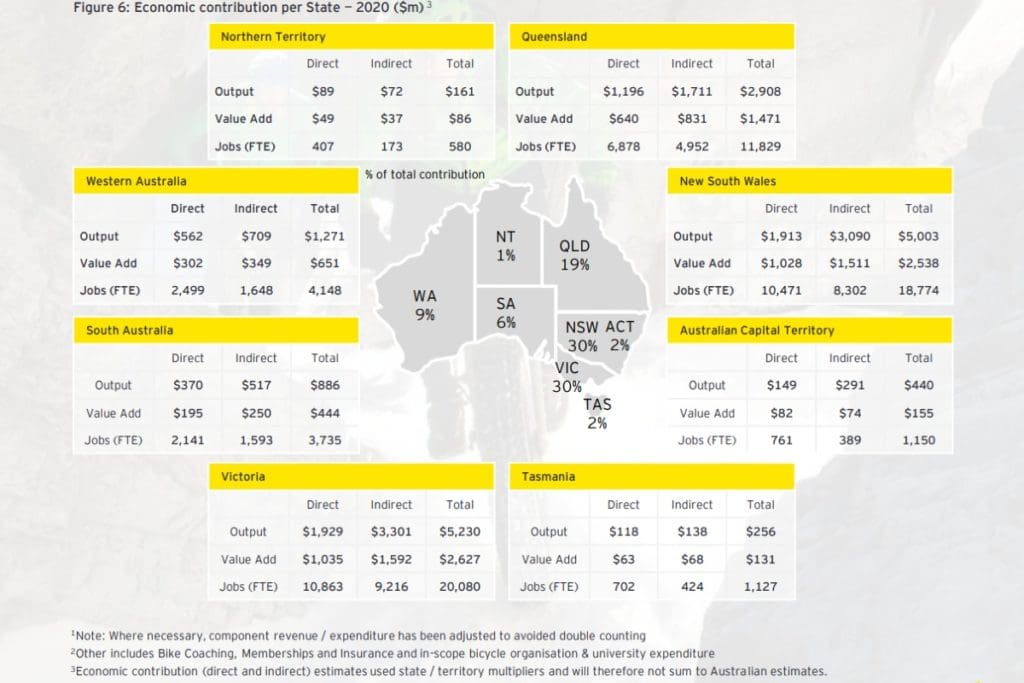
The study, which was published today, claims that in 2020 cycling helped the Australian economy in the amount of $6.3 billion. This statistic takes into account that economic activity is directly produced by bicycle riders, organisations, and local and state governments’ supply of infrastructure to events, research, and sport and recreational cycling.
Meanwhile, it was calculated that cycling contributed $3.4 billion in “direct value increase” to Australia’s GDP. That is equal to or greater than the contribution made by the Australian business and more than three times the contribution made by the Australian motorsport industry.
Key findings are as follows:
- Governments invested more than $428 million in cycling-related initiatives and infrastructure.
- There were 60,330 direct and indirect jobs supported nationwide by a total of $16.8 billion in direct and indirect economic contributions.
- 5.8 million (29%) of adult Australians spent money on products and services linked to cycling.
- Australians rode at least once a week and spent money on it—3.3 million people.
- All cyclists who made purchases paid an average of $990 each.
- The bulk of buyers had annual household incomes between $50,000 and $150,000.
- Children’s bicycles made up 28% of all bicycle purchases.
- In 2020, 1.7 million bikes valued at $1.5 billion were bought.
- Cycle tourism contributed $1.168 billion to the immediate economic output.
- While 82% of those questioned said they rode their bikes for fitness and exercise, 41% said they rode their bikes for transportation, whether it be to work, school, or the store.
EY and We Ride point out that while the economic benefits of cycling were taken into account for their study, there are other benefits as well.

It is acknowledged that the physical activity benefits of cycling participation support wider health and well-being, and social and productivity benefits to the Australian economy, even though this research concentrates on the economic contribution of the industry. By easing traffic and offering a sustainable transportation choice, cycling as a method of transportation can also help local communities.
Australia’s rising popularity of cycling has given rise to new business possibilities for trip operators, bike rental businesses, and lodging facilities that are bike-friendly. These companies supply the increasing demand for bicycle tourism in Australia, which draws both domestic and foreign tourists. Australia’s natural grandeur is highlighted by cycling routes and trails, which also offer a distinctive and eco-friendly travel experience. In reality, it’s estimated that the Australian economy earns more than $1.2 billion a year from cycling tourism.
Furthermore, it has been demonstrated that cycling lowers healthcare costs by encouraging physical exercise and lowering the prevalence of chronic illnesses. Regular cycling can help people manage their weight, reduce stress, and improve their cardiovascular health, all of which can result in reduced healthcare costs for both the individual and the healthcare system. Cycling also encourages mental health and well-being, which is crucial in lowering the price of treating mental diseases.
Additionally, cycling is good for the environment and for everyone’s well-being. Cycling has a positive effect on public health because it reduces air pollution, carbon emissions, and traffic congestion. Cycling is a sustainable mode of transportation that lowers the carbon footprint of people and the economy as a whole. Lower air pollution has been related to lower rates of cancer and respiratory disease.
The growing interest in environmentally friendly transportation and the growing knowledge of cycling’s health advantages have both benefited the Australian cycling business. We can anticipate more economic benefits in the future as Australia’s cycling sector continues to expand. To guarantee the sustainability and expansion of the industry, it is crucial for the government and companies to keep funding cycling infrastructure and promotion.
Through the establishment of jobs, increased tourism, and better public health, cycling has grown to be a significant economic force in Australia. The bicycle industry in Australia is expanding, so it’s critical that companies and the government continue to fund infrastructure improvements and marketing campaigns for the sport. The advantages of cycling are obvious, and with continued funding, Australia can anticipate additional economic gains in the future.
The post Cycling And Australia Economy appeared first on TheAussieway.
]]>